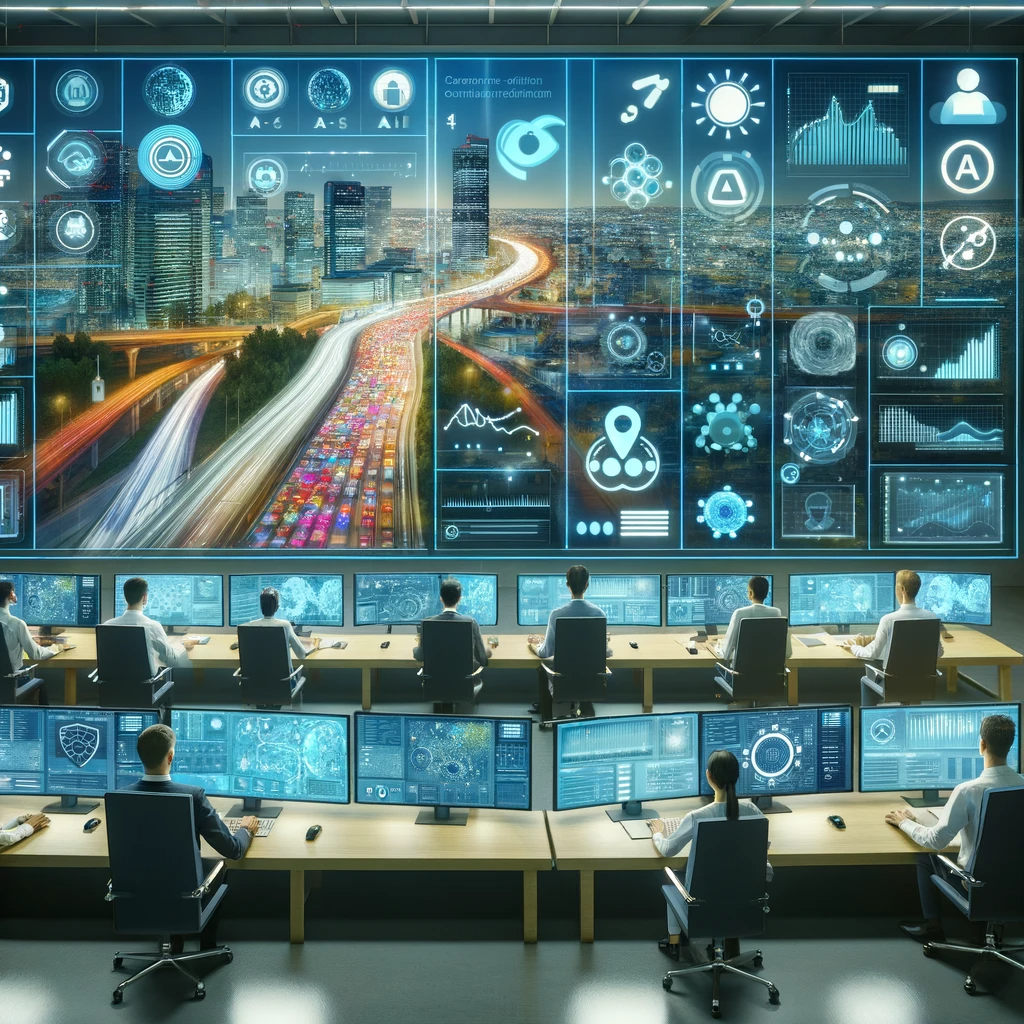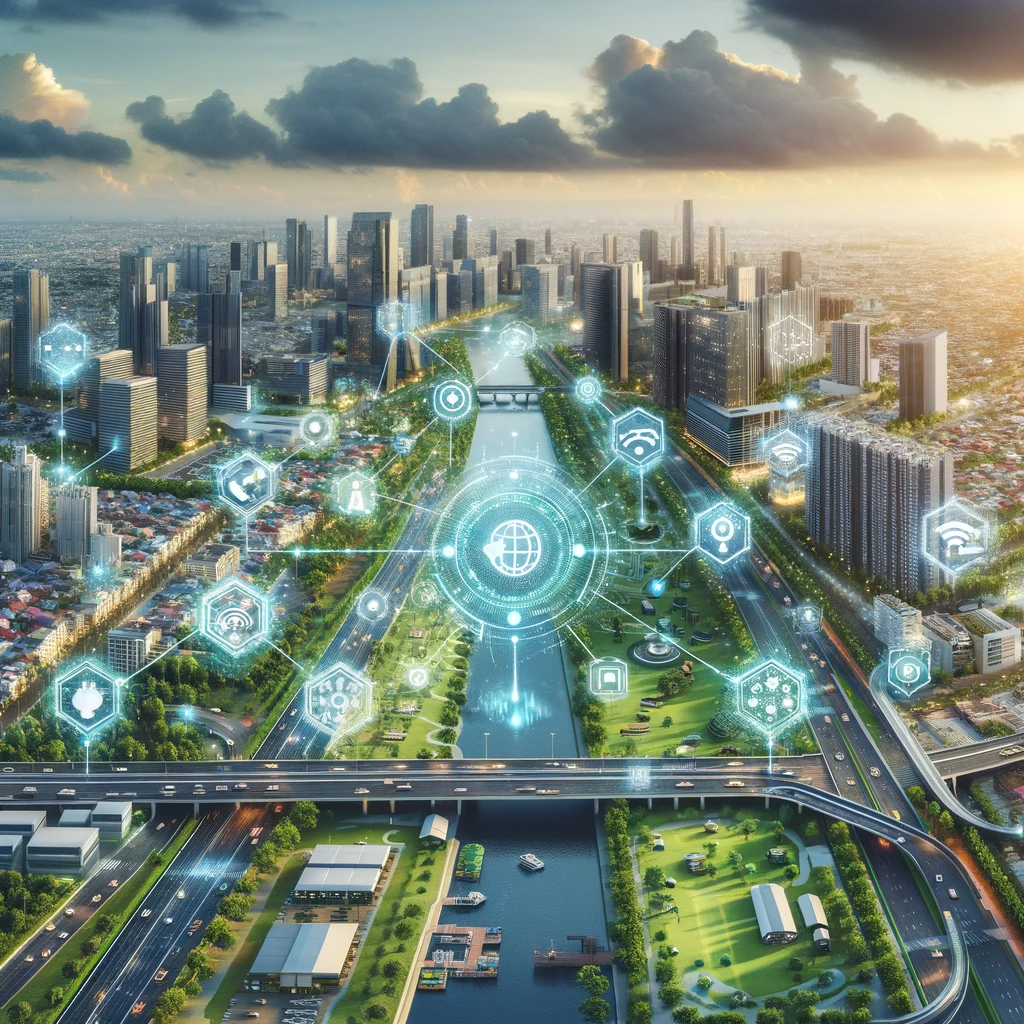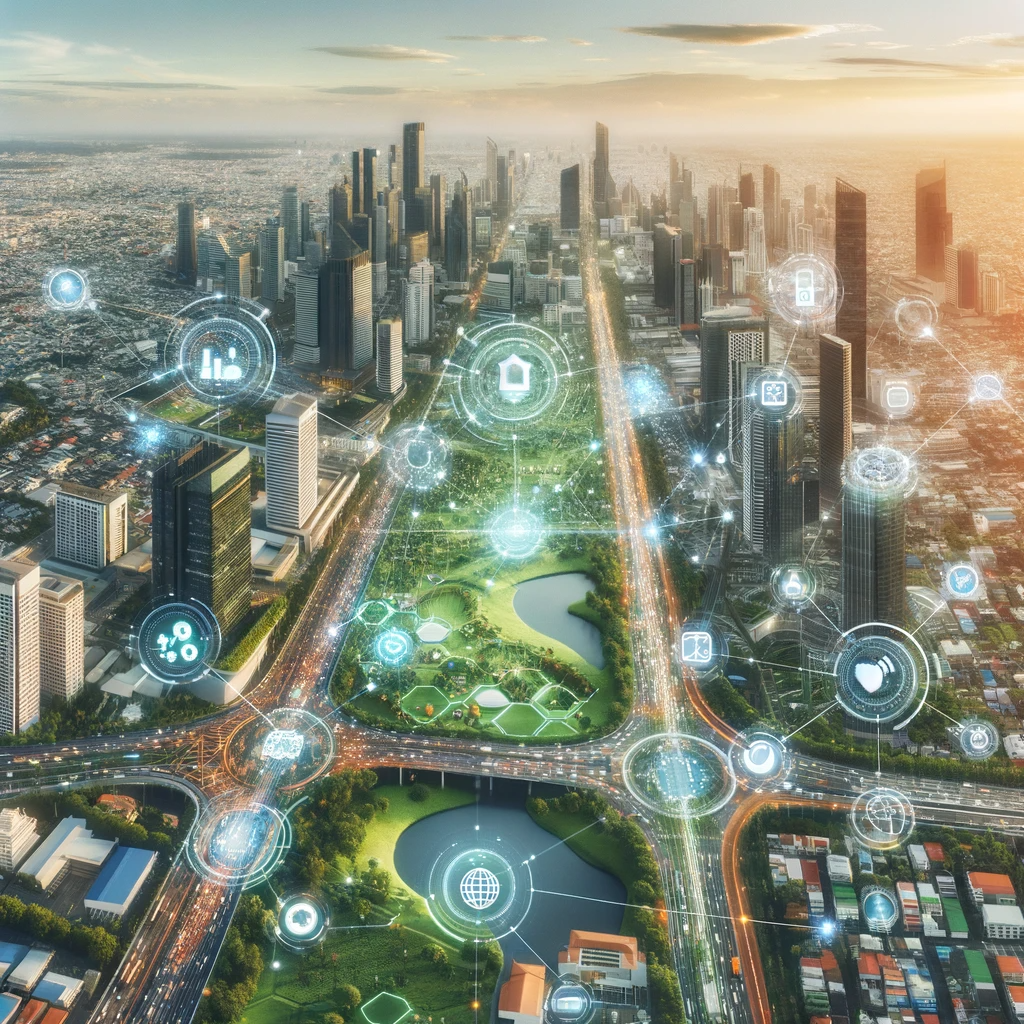The relentless pulse of urbanization continues to shape the world’s landscape, with more than half of the global population now residing in cities. As our cities grow, so do the challenges of managing their intricate ecosystems and ensuring the well-being of their inhabitants. In response to these demands, the concept of smart cities has emerged as a beacon of innovation and efficiency in urban development.
Smart cities harness the power of technology to create urban environments that are not just habitable but also responsive, sustainable, and connected. From intelligent traffic management systems to energy-efficient buildings and data-driven governance, the transformation is evident. Yet, at the heart of this urban metamorphosis lies a silent but potent force: Artificial Intelligence (AI).
AI, with its capacity to process data at speeds and scales beyond human capabilities, is ushering in a new era in the way we monitor and maintain our urban centers. It serves as the digital brain of smart cities, orchestrating real-time responses, optimizing resources, and predicting future needs. As we delve into the intricate web of AI-powered urban management, we ask a fundamental question: Is AI truly transforming the way we monitor and maintain smart cities?
This article embarks on a journey to uncover the profound impact of AI in reshaping urban landscapes. We’ll explore the rise of smart cities, delve into the critical role of AI in monitoring and maintenance, examine real-world case studies, and weigh the benefits against the challenges. From enhancing public services to addressing ethical concerns, we’ll navigate the evolving landscape of smart cities and AI, ultimately gazing into the future of urban living.
The story that unfolds is one of innovation, efficiency, and the relentless pursuit of sustainable urban development. It’s a narrative where technology converges with urban planning, and where the cities of tomorrow emerge as not just smart, but truly intelligent, responsive, and adaptive. In a world where the urban pulse never ceases, AI is the heartbeat of the future cityscape.
The Rise of Smart Cities
Smart cities represent a visionary response to the complex challenges posed by rapid urbanization. These urban hubs are designed to harness the potential of technology for the betterment of city dwellers. In this section, we will delve deeper into the concept of smart cities, their benefits, and the challenges they face.
- Definition: Smart cities, in essence, are urban areas that leverage advanced technologies, including the Internet of Things (IoT), data analytics, and AI, to improve the quality of life, sustainability, and efficiency of their services. They transform into living ecosystems where information flows seamlessly, enhancing decision-making and resource allocation.
- Benefits: The advantages of smart cities are multifaceted and impactful. They include enhanced resource management, energy efficiency, reduced pollution, streamlined transportation, improved healthcare, and greater overall quality of life. Smart cities are designed to be responsive, adapting to the ever-changing needs of their residents.
- Challenges: However, the journey towards becoming a smart city is not without obstacles. Challenges such as data management, privacy concerns, the digital divide, and the high infrastructure costs required to implement smart solutions must be addressed. These challenges underscore the importance of a strategic approach to urban transformation.
As we navigate through the intricate web of smart city development, it becomes clear that AI plays a pivotal role in realizing the vision of urban areas that are not just connected but also intelligent, capable of evolving and optimizing services in real-time.
The Role of AI in Smart City Monitoring
Artificial Intelligence (AI) is the cornerstone of modern urban transformation, breathing life into the concept of smart cities. This section provides an overview of AI, emphasizing its fundamental concepts and its profound relevance in the context of smart city operations. Furthermore, it explores AI’s capacity for real-time data analysis and predictive maintenance, which are pivotal for the dynamic monitoring and optimization of urban services.

AI Overview
Artificial Intelligence is an interdisciplinary field that seeks to create computer systems capable of performing tasks that typically require human intelligence. Its fundamental concepts revolve around the following key components:
- Machine Learning: At the heart of AI is machine learning, a subset of the field that focuses on developing algorithms and models that can learn from data. Machine learning allows AI systems to improve their performance over time through experience, making them adaptable and capable of recognizing patterns and making predictions.
- Data Processing: AI excels at processing vast amounts of data at high speeds. This capability is essential in the context of smart cities, where an abundance of data is generated by sensors, cameras, and connected devices. AI can analyze this data efficiently, extracting valuable insights and facilitating informed decision-making.
- Real-time Monitoring: AI systems can continuously monitor and process data in real-time. This real-time monitoring is particularly valuable for urban services such as traffic management, emergency response, and energy distribution. AI ensures that cities can respond swiftly to changing conditions and optimize resources accordingly.
Real-time Data Analysis
One of AI’s most compelling strengths is its ability to perform real-time data analysis. In the context of smart cities, this capability allows for:
- Traffic Management: AI can analyze live traffic data from cameras and sensors to optimize traffic flow, reduce congestion, and improve transportation efficiency. It can dynamically adjust traffic signals, reroute vehicles, and predict traffic patterns to prevent gridlock.
- Energy Consumption: AI-driven systems can monitor energy consumption in real-time, identifying areas where energy efficiency can be improved. This includes adjusting lighting, heating, and cooling systems based on occupancy and environmental conditions.
- Air Quality: Sensors measuring air quality in smart cities continuously feed data to AI algorithms. AI can interpret this data to predict air quality trends, issue alerts during pollution spikes, and adjust ventilation systems in buildings to ensure clean indoor air.
- Waste Management: Smart waste bins equipped with sensors can alert authorities when they need emptying. AI algorithms can optimize waste collection routes, reducing fuel consumption and emissions.
Predictive Maintenance
One of AI’s most valuable contributions to smart cities is predictive maintenance. By analyzing historical data and patterns, AI can forecast equipment failures and infrastructure issues. In the context of smart cities, this proactive approach has far-reaching benefits:
- Infrastructure: AI can predict and prevent failures in critical infrastructure such as water pipelines, electricity grids, and public transportation systems. By addressing issues before they escalate, cities can reduce downtime, save costs, and minimize disruptions to residents.
- Cost Efficiency: Predictive maintenance allows cities to allocate resources more efficiently. Rather than reacting to emergencies, they can plan maintenance activities based on AI-driven predictions, reducing overall maintenance costs.
- Enhanced Service Delivery: Proactive maintenance means that services like public transportation are more reliable. Fewer breakdowns and disruptions lead to improved quality of life for residents.
In summary, AI is not just a technological addition to smart cities; it is the driving force behind their evolution. Its ability to analyze data in real-time and predict infrastructure maintenance needs empowers cities to operate efficiently, respond to challenges swiftly, and improve the quality of life for their residents. As we delve deeper into AI’s applications in smart cities, we’ll explore concrete case studies and success stories that demonstrate the transformative potential of this technology.

Conclusion
In the heart of our modern urban centers, where bustling streets, towering skyscrapers, and vibrant communities converge, a quiet yet potent force is at work, orchestrating a transformation that transcends the physical and touches the very essence of city life. Artificial Intelligence (AI), with its remarkable capacity for real-time data analysis and predictive insights, stands as the guardian of our evolving metropolises, breathing life into the concept of smart cities.
As we conclude our exploration of how AI is revolutionizing the way we monitor and maintain smart cities, several crucial takeaways come to light:
AI’s Pivotal Role: AI has emerged as the central nervous system of smart cities. Its ability to process vast streams of data in real-time and make predictions empowers urban centers to operate at unparalleled levels of efficiency, responsiveness, and sustainability.
Real-time Data Analysis: With AI, smart cities can continuously monitor a multitude of aspects, from traffic flow and energy consumption to air quality and waste management. This real-time analysis allows cities to respond swiftly to changing conditions, optimize resource allocation, and enhance the overall quality of life for their residents.
Predictive Maintenance: Perhaps one of AI’s most transformative applications, predictive maintenance, ensures that urban infrastructure—from water pipelines to public transportation systems—remains reliable and efficient. By addressing potential issues before they escalate, AI reduces downtime, minimizes disruptions, and saves considerable costs.
Case Studies and Success Stories: Throughout our journey, we’ve encountered concrete examples of how AI is reshaping urban landscapes. From smart traffic management systems that reduce congestion to energy-efficient buildings that adapt to occupancy, these case studies showcase the real-world impact of AI on smart city operations.
Challenges and Opportunities: As with any technological revolution, AI in smart cities is not without its challenges. Privacy concerns, data management, and infrastructure costs demand careful consideration. However, these challenges are matched by the immense opportunities AI presents in creating cities that are more sustainable, responsive, and citizen-centric.
In the ever-evolving narrative of our urban existence, AI emerges as the protagonist, tirelessly working behind the scenes to ensure that our cities are not just smart but truly intelligent. The future it paints is one where technology converges with urban planning, creating adaptive, sustainable, and responsive urban environments that prioritize the well-being of their inhabitants.
As the pulse of urbanization quickens, AI is the heartbeat of our cities, guiding them towards a future where innovation knows no bounds, and the concept of urban living transcends our current imagination. In the grand theater of smart cities, AI takes center stage, ensuring that the show goes on with ever-increasing efficiency, sustainability, and, above all, the well-being of those who call these cities home.
